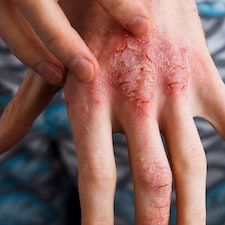Article
Frequent Allergies in Pediatric Atopic Dermatitis, Eosinophilic Esophagitis Patients in Puerto Rico
Author(s):
New data presented at ACAAI 2022 observed various trends in allergies associated with eczema and eosinophilic esophagitis, comparing observed data with that of patients in the United States.

A recent study in Puerto Rico assessed trends among pediatric patients with atopic dermatitis (AD) and eosinophilic esophagitis (EoE) including regional tendencies, comorbidities, and common allergens.
As a chronic pruritic inflammatory skin disease, AD is known as the most frequent dermatologic disorder for children. EoE, on the other hand, is an antigen-mediated, chronic esophageal disease known to impact 43 of every 100,000 pediatric patients in the US.
Flare-ups of EoE and AD can result from dietary and environmental factors, which is why they were seen as important to assess. The study was led by Vylma Velázquez MD, FAAP, FACAAI, from the Centro Medici Episcopal San Lucas.
“This pilot study attempts to identify and compare frequent allergies in pediatric patients with AD or EoE,” Velázquez and colleagues wrote. “The purpose is to provide physicians with more defined data on the relationship between allergies and these diseases in Puerto Rico and how to apply ambient exposure modifications and dietary restrictions to the Puerto Rican diet.”
Background
The study involved reviewing the medical records of 138 patients in Ponce, Puerto Rico at a specific allergist/immunologist outpatient clinic. The investigators included patients who matched the following inclusion criteria:
- RAST IgE-specific or epicutaneous allergy tests
- Ages 1 to 18 years
- Data assessed between December 2016 - 2021
The investigators assessed the presence of both qualitative and quantitative variables in study participants. They then compared the collected data to that of AD and EoE patients in the US.
Findings
The investigators found regarding comorbidities that AD patients showed statistical significance of allergic rhinitis presence compared to EoE, 30.4% and 72.7% respectively. They also noted clinical relevance of allergic conjunctivitis and asthma in both groups.
The research team reported that the allergies with the most statistical significance were nuts, peanuts, soya beans and walnuts, with prevalence in EoE patients versus AD patients. The most common allergens for AD patients were eggs at 36.0%, milk at 32.8%, and wheat at 16.8%. EoE patients’ most common food allergens were peanuts at 36.4%, soya beans at 27.3%, and eggs, almonds, nuts, and wheat with equal patient percentages of 18.2%.
Additionally, the investigators noted that among environmental allergies, the most statistically significant was cat allergy with prevalence in EoE patients compared to AD. AD patients’ most predominant allergies were to dust mites, yeast and dogs, and EoE patients’ most predominant were dust mites, cats, and pollen.
“When our data was analyzed and compared to that of the United States, atopic dermatitis showed the same trend as reported across the states. In contrast, the prevalence of sensitivities to the most common allergens were reported differently in our studies in patients with EoE. More patients of EoE will be evaluated to reassess food sensitivities and associated food exacerbations.”
The study, “Prevalence of allergies on Pediatric Patients with Atopic Dermatitis and Eosinophilic Esophagitis,” was presented at ACAAI 2022.





